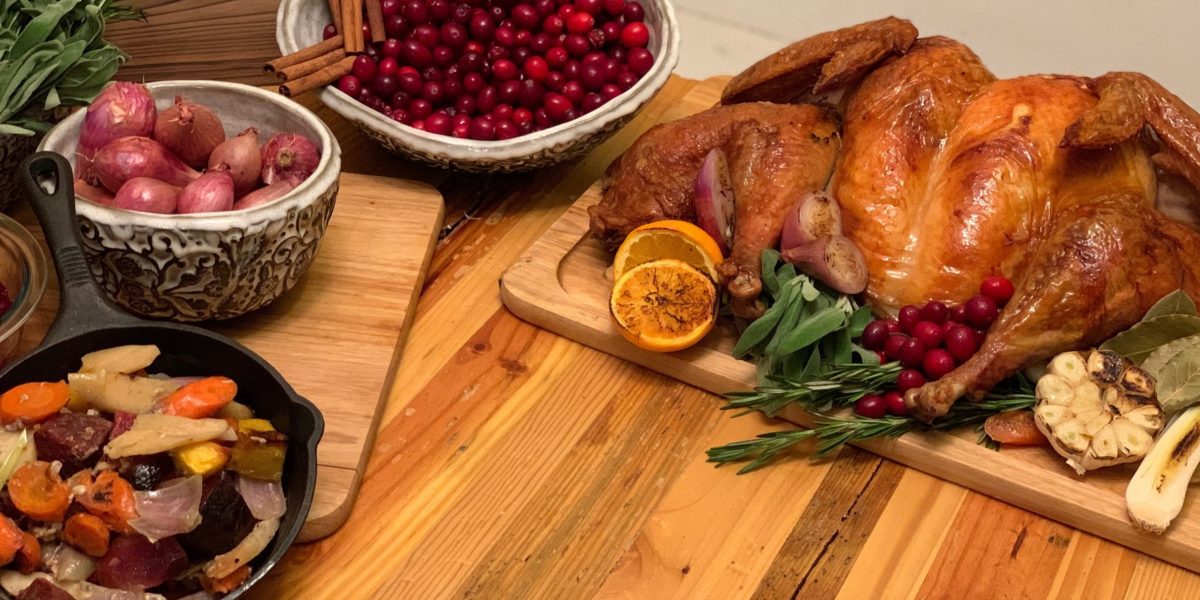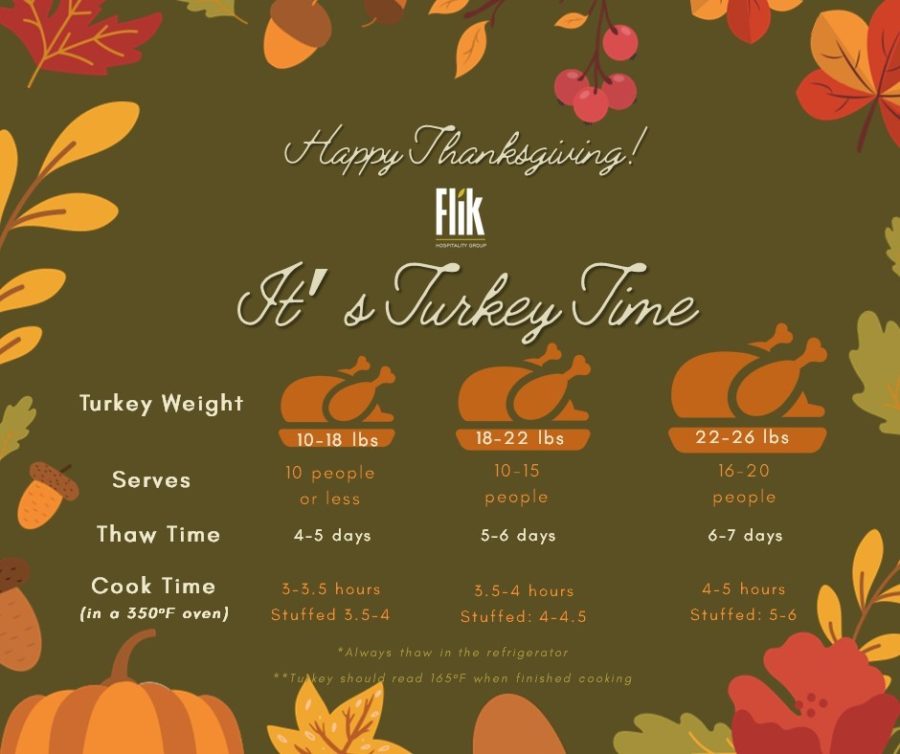
Friendships By FLIK: Let’s Talk Turkey
Turkey is the centerpiece of any Thanksgiving feast. But for many, turkeys are also the trickiest part of the menu to make -- and frankly, the most intimidating.
Thanksgiving turkey should meet a few minimum qualifications -- juicy meat, crispy skin, and enough for leftover turkey sandwiches. And we're here to help tackle your turkey fears with this easy guide on what type of turkey to buy, understanding some methods of preparation, and tips from our own associates on how they prepare turkey at home each year!
What To Buy
When it comes to buying a turkey, there are a few things to consider:
- How many servings do you want to prepare?
- Does our party have a preference on white or dark meat?
A little turkey math = Generally you want 1.5 pounds of turkey per person. This will leave you with a little extra leftovers for second helpings or Black Friday turkey sammies.
If you're Thanksgiving celebration will be a little smaller than normal, consider making a bone-in turkey breast instead of a whole turkey. You can still stuff it without feeling overwhelmed by an entire bird.
If your family has a preference on dark or white meat, consider making a bunch of thighs for dark meat lovers or a breast-only for white meat lovers.
If you've got a larger than normal Thanksgiving crowd, consider buying two medium sized turkeys instead of a 25+ pound bird.
I've Got My Turkey, Now What?
Thaw It
If you bought a frozen turkey, you'll need to thaw it day a few days before your Thanksgiving feast. Just remember: never, ever thaw your poultry on the counter.
Instead, thaw it in the refrigerator. Plan for at least 24 hours of thawing for every 5 pounds of turkey. Once the turkey is completely thawed, it can continue to be refrigerated for up to 2 additional days. A few additional tips for thawing a turkey:
- Keep the turkey in its original wrapping while it's thawing.
- Place the bird breast-side-up in a baking pan to keep any drips from contaminating other foods and refrigerator surfaces.
For more kitchen safety tips, check out this blog post: The Food Safety Tips For The Home Cook.
To Brine or Not To Brine
Brining a turkey involves submerging it for a few hours in a mixture of salt, water, and spices. Some chefs say this results in more flavorful meat and a crispier skin, but the preference to brine is up to you. A few more tips for brining a turkey:
- Never brine a turkey for more than about 8 to 10 hours. Much longer and the meat will be too salty.
- Always keep the bird refrigerated during brining.
Let's Get Cooking
Starting with the seasoning, you want to build lots and lots (and lots) of flavor in your turkey by seasoning it from the inside out.
One way to do this is (obviously) to stuff the turkey in a traditional sense. Adding a bread-based mixture into the turkey will help season your bird. A good rule of thumb is to use about 1/2 to 3/4 cup of stuffing per pound of turkey. If you're anti-stuffing, sprinkle the cavity with herbs and seasonings; fill it with aromatics like onions and garlic to help build additional flavor.
Fun Fact: Stuffing and Dressing are used interchangeably (for the most part) and really relates to geographic colloquialisms. From a culinary perspective, stuffing is more commonly used for this bread-based mixture inside the bird, where dressing is cooked outside the turkey. Comme ci, comme ça.
From there, there are numerous ways to actually cook your turkey -- oven roasted, deep fried, barbecued, braised. You can even cook it in a crockpot, pressure cooker, or air-fryer -- the options are truly endless.
No matter how you decide to cook your turkey, you want it the thickest part of the turkey meat to reach 165 degrees F. If you choose to stuff the turkey with traditional stuffing, the bread mixture should reach a temperature of 165 in the deepest part to be food safe.
Don't forget to let the turkey rest. After removing it from the oven (or which ever way you plan on preparing it), cover it with aluminum foil, and let it rest for about 20 minutes. After the bird has had some time to relax, remove the stuffing and then you can start carving.

Go Zero Waste with Leftovers
Don't discard the turkey carcass! You can use it to make a delicious broth, and by extension a turkey tortellini soup or substitute turkey in this Chicken, Quinoa, Vegetable Soup.
Leftover turkey can be transformed in any dish that uses chicken or other proteins. Think into a casserole, turkey pot pie, or shepherd's pie. Get creative! Turkey enchiladas or breakfast hash, anyone?
Need more Thanksgiving inspiration? Have no fear, FLIK is here. Check out our entire Holidays By FLIK cooking library today! And read more in this series:
+++
What We Were Talking About in 2019: Farro, Broccoli Parmesan Risotto
What We Were Talking About in 2018: MIT Stories: Meet Sydney
At FLIK Hospitality Group we believe in great food, great service, and great people. Our wellness first approach ensures our food supports healthy and delicious choices, specially curated by our team of culinary experts and registered dietitians. At FLIK, we believe in seasonality in sourcing our ingredients and providing a customized approach to the culinary and hospitality needs of each client. Our dedication to providing quality hospitality service is unparalleled in the industry.
Have feedback or questions for our team? Email us at flikblog@compass-usa.com.
Interested in working with us? Apply today!